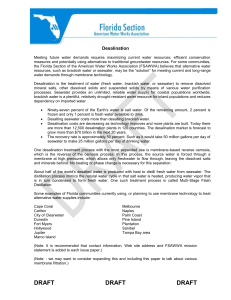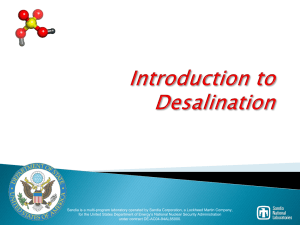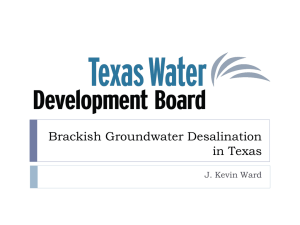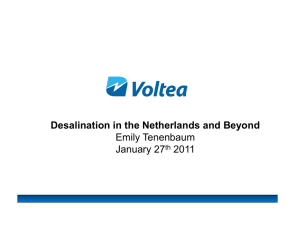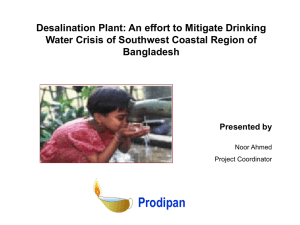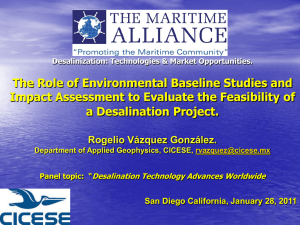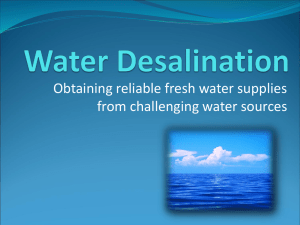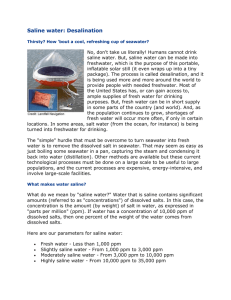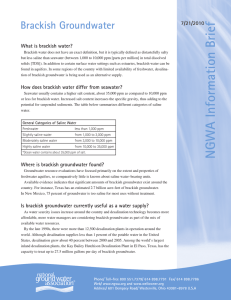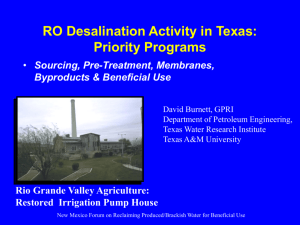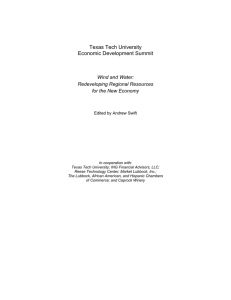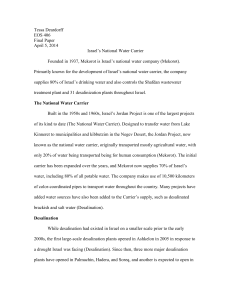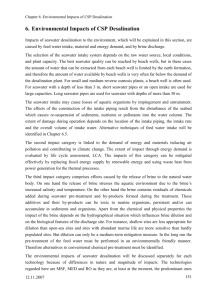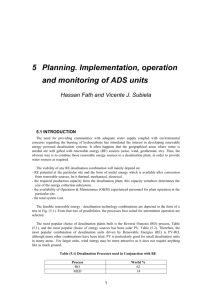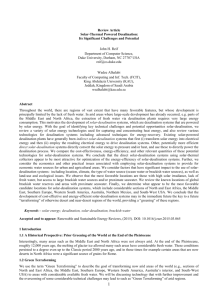The Future of Desalination in Texas Brine can transform water
advertisement
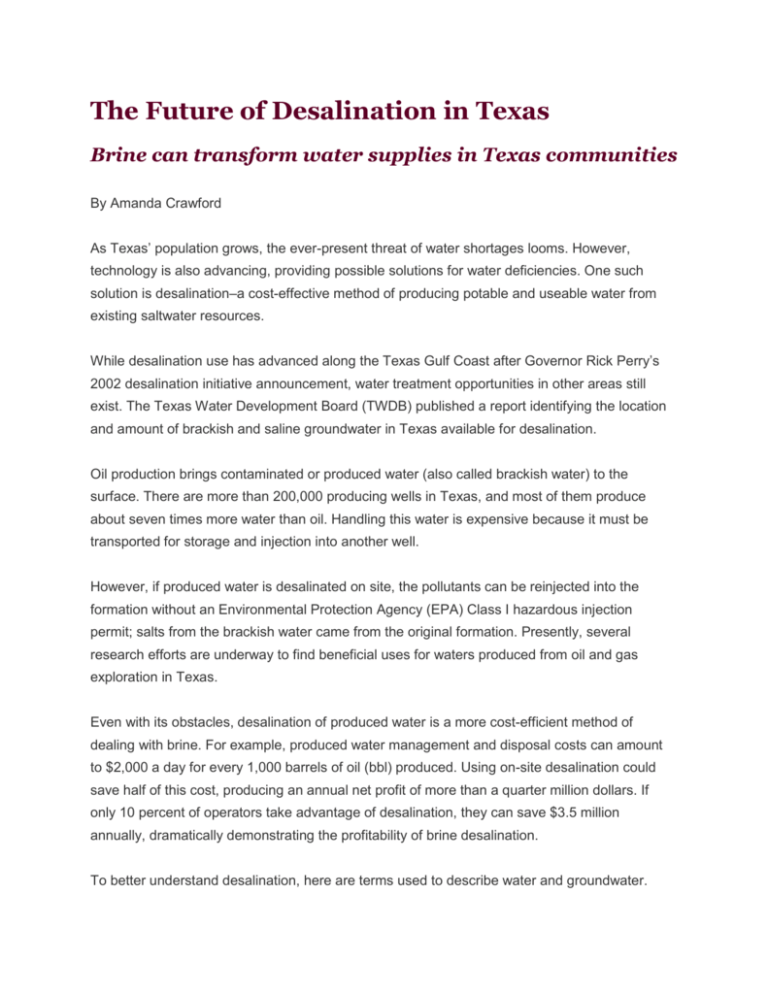
The Future of Desalination in Texas Brine can transform water supplies in Texas communities By Amanda Crawford As Texas’ population grows, the ever-present threat of water shortages looms. However, technology is also advancing, providing possible solutions for water deficiencies. One such solution is desalination–a cost-effective method of producing potable and useable water from existing saltwater resources. While desalination use has advanced along the Texas Gulf Coast after Governor Rick Perry’s 2002 desalination initiative announcement, water treatment opportunities in other areas still exist. The Texas Water Development Board (TWDB) published a report identifying the location and amount of brackish and saline groundwater in Texas available for desalination. Oil production brings contaminated or produced water (also called brackish water) to the surface. There are more than 200,000 producing wells in Texas, and most of them produce about seven times more water than oil. Handling this water is expensive because it must be transported for storage and injection into another well. However, if produced water is desalinated on site, the pollutants can be reinjected into the formation without an Environmental Protection Agency (EPA) Class I hazardous injection permit; salts from the brackish water came from the original formation. Presently, several research efforts are underway to find beneficial uses for waters produced from oil and gas exploration in Texas. Even with its obstacles, desalination of produced water is a more cost-efficient method of dealing with brine. For example, produced water management and disposal costs can amount to $2,000 a day for every 1,000 barrels of oil (bbl) produced. Using on-site desalination could save half of this cost, producing an annual net profit of more than a quarter million dollars. If only 10 percent of operators take advantage of desalination, they can save $3.5 million annually, dramatically demonstrating the profitability of brine desalination. To better understand desalination, here are terms used to describe water and groundwater. Freshwater contains less than 1,000 milligrams per liter (mg/L) of total dissolved solids (TDS). Brackish groundwater includes slightly-saline (between 1,000 to 3,000 mg/L TDS) and moderately-saline (3,000 to 10,000 mg/L TDS) levels. Saline water has more than 10,000 mg/L TDS and seawater has about 35,000 mg/L TDS. Both water produced from oil wells and some groundwater contain brackish and saline water. In terms of desalination, brackish water is the best treatment candidate, and approximately onethird of the produced water in Texas falls into this category. Desalinating produced brackish water comes with its drawbacks. Produced water can be up to four times saltier than seawater, making it difficult to work with. In addition, it contains crude petroleum which can be somewhat soluble in water and metal salts leached from rock formations. Furthermore, because of the oil in this produced water, it requires more pretreatment than seawater does. Even with the additional cost of pre-treatment, the total operating costs during 7-hour days average less than $10 for 23,000 gallons of brackish water processed. For an average $1 bottle of water (16.9 fl. oz.), the cost of producing this water would be approximately $.000057 per bottle, for a profit of nearly 100 percent. To be fair, standards for drinking water are high, and such treatment would receive intense examination by the state before approval. If drinking water is not the ideal use for this water, there are several other alternatives. Because minimal regulations exist for livestock drinking water, ranchers can use desalinated water for their purposes. More than 133 million gallons of treatable water are produced each day, which is a sufficient irrigation amount for farmers as well, even if no other sources for irrigation existed. Besides the economic benefits, on-site treatment is less hazardous than transporting large qualities of brine on public roads. As researchers assess the environmental efficiency of desalination, it is clear that desalination will play an integral part in the future of water production and conservation. The Permian Basin Underground Water Conservation District would be glad to assist you with the information on desalination. We invite you to call us at 432-756-2136, or come by our office at 101 N. St. Joseph Street in Stanton. You may also email us at permainbasin@sbcglobal.net or access our website at pbuwcd.com

